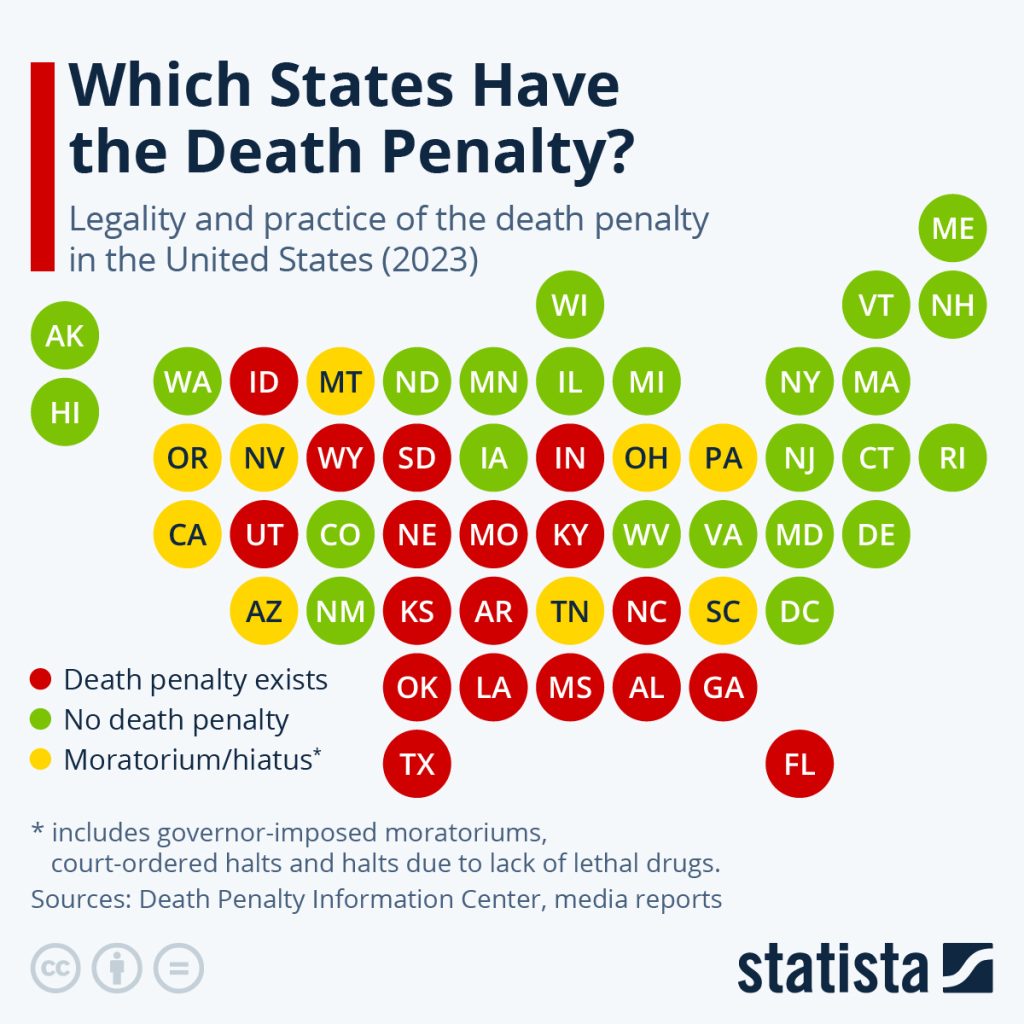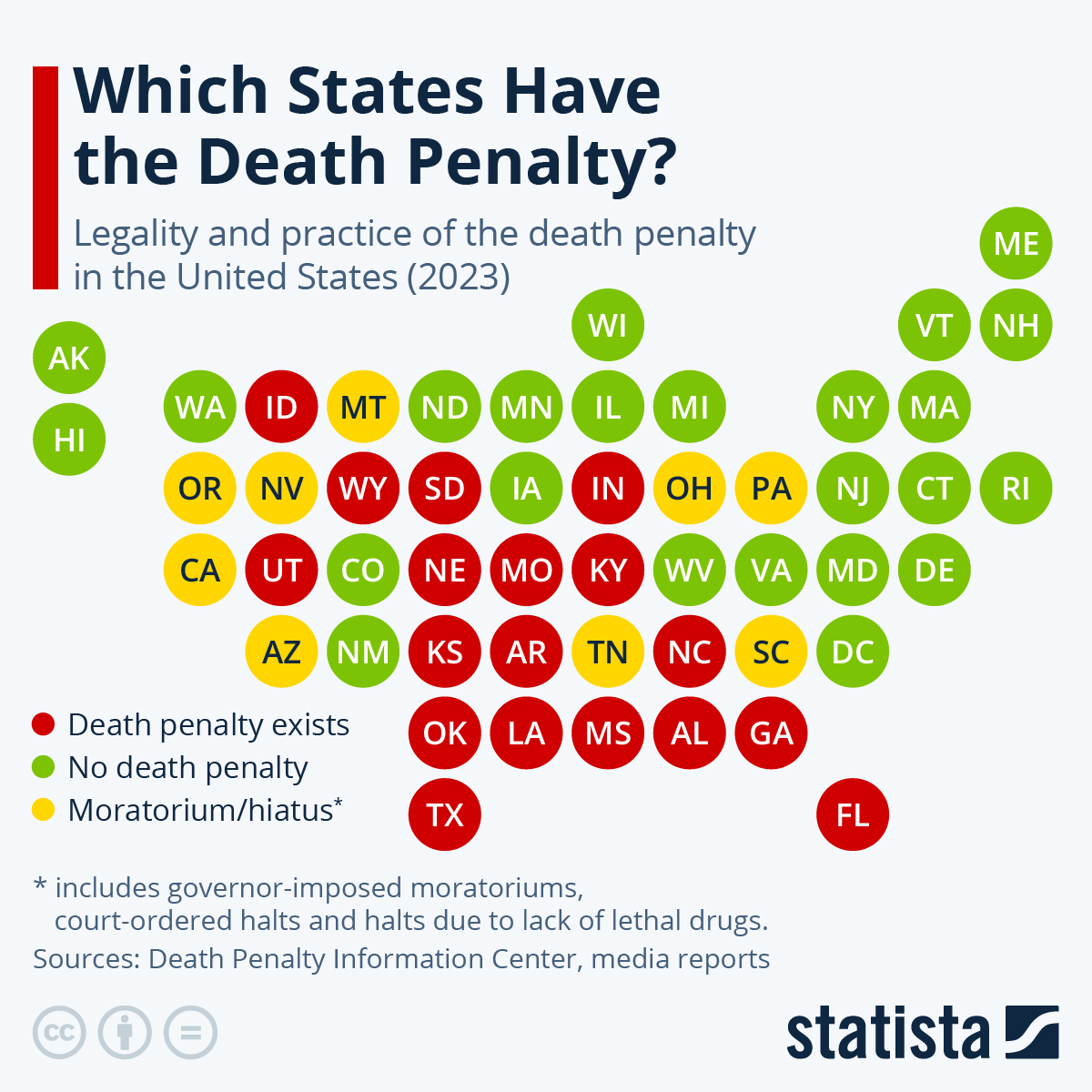Author Srdjan Ilic from Southwest Journal writes extensively about capital punishment in the US, including its history, techniques, and controversies. This detailed look at 27 states that allow capital punishment examines their practices, laws, and disputes.

Death Penalty Evolution Over Centuries
The US has 27 states that allow the death sentence, each with its own approach. Texas leads in lethal injection executions, having carried out over 500 since 1982. Since 1979, Florida has killed over 90 people by lethal injection and electric chair. California, with the largest death row population, has refused to execute anyone since 2006 while it grapples with capital punishment. With almost 50 executions since 1999, Ohio’s lethal injection medication practices are controversial. Alabama has executed approximately 60 people by lethal injection and electric chair since 1983. Georgia has executed over 70 individuals since 1983 using lethal injection, although drug supply is a problem. Oklahoma’s over 100 executions since 1976 have been controversial and bungled. Missouri has executed over 80 people since 1989 via lethal injection with fewer controversy. Indiana has executed at least 20 people since 1977 without controversy. Despite drug protocol scandals, Arizona has killed over 35 people since 1992.
South Carolina’s inventive firing squad executions have garnered notice. Drug combinations for lethal injections have caused controversy in Nevada, with 12 executions since 1977. Over 130 people have been killed in Tennessee via lethal injection or electric chair since 1916. In 2017, Arkansas’ rapid executions garnered international notice. Mississippi allows lethal injection, gas chamber, and firing squad executions with 35 since 1976. Kansas reintroduced the death sentence in 1994 but has not executed anyone. With three executions since 1976, Kentucky enables lethal injection and the electric chair. Restoring the death penalty in 2016, Nebraska has executed three people since 1976. Idaho executes mostly via lethal injection, with three since 1976. Utah has executed seven people by firing squad since 1976.
Montana predominantly uses lethal injection, executing three individuals since 1976. Lethal injection has dominated North Carolina’s 43 executions since 1976. Oregon has not executed anyone since 1997 due to its moratorium. Lethal injection has been used in four South Dakota executions since 1976. Wyoming authorizes gas chamber and death injection, with one execution since 1976. Louisiana has killed 28 people, mostly by lethal injection, since 1976, but none since 2010. Pennsylvania has killed three people since 1976 but has a moratorium since 1999. In this heterogeneous context, states face ethical issues, execution method debates, and legal issues that influence the US death punishment discourse.
READ ALSO: FBI Data: California’s Most Dangerous Cities of 2023
A Complex Tapestry of Capital Punishment in the U.S.
The landscape of capital punishment in the United States is a complex tapestry woven from the distinct approaches of 27 states. Ranging from prolific executioners like Texas to those with sporadic utilization such as Wyoming, each state navigates a unique path through ethical considerations, controversies over execution methods, and the legal intricacies surrounding the death penalty.
The disparities in execution rates, methods employed, and the existence of moratoriums underscore the ongoing national debate on the effectiveness, morality, and necessity of capital punishment. As these states continue to grapple with the multifaceted challenges posed by the death penalty, the future of this contentious practice remains deeply entwined with evolving societal values, legal considerations, and ethical principles.
READ ALSO: 10 Most Dangerous Cities in Illinois 2023 Raise Alarming Concerns




